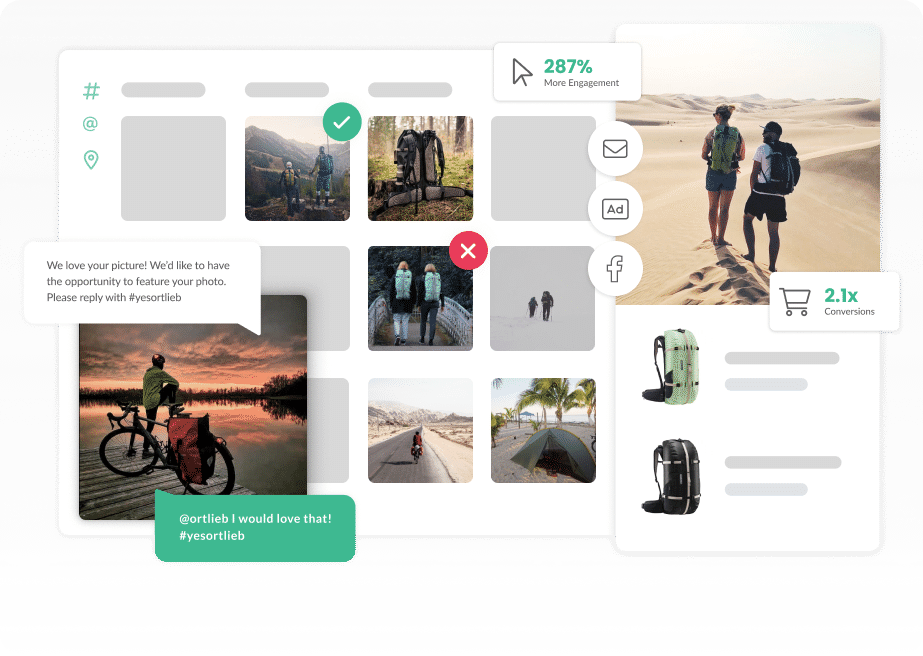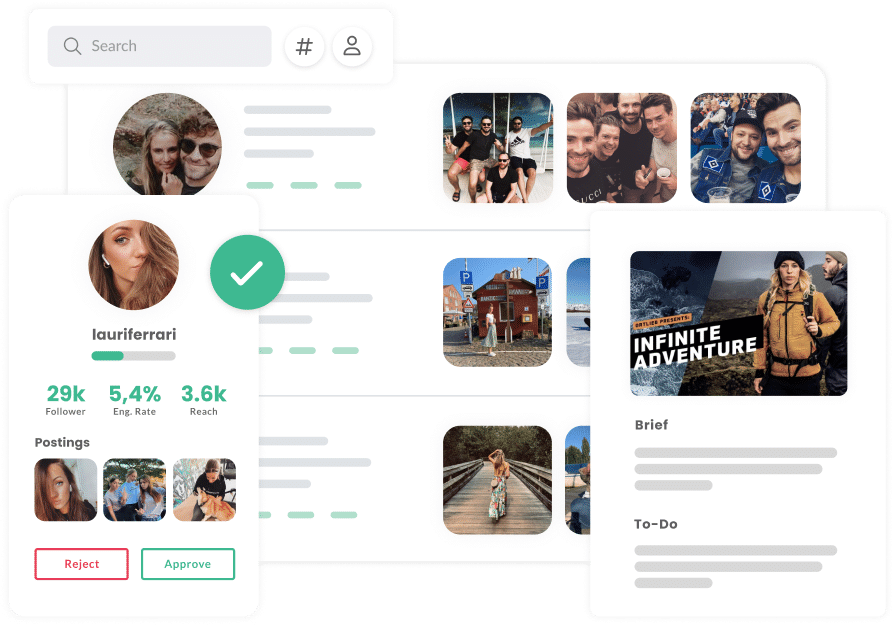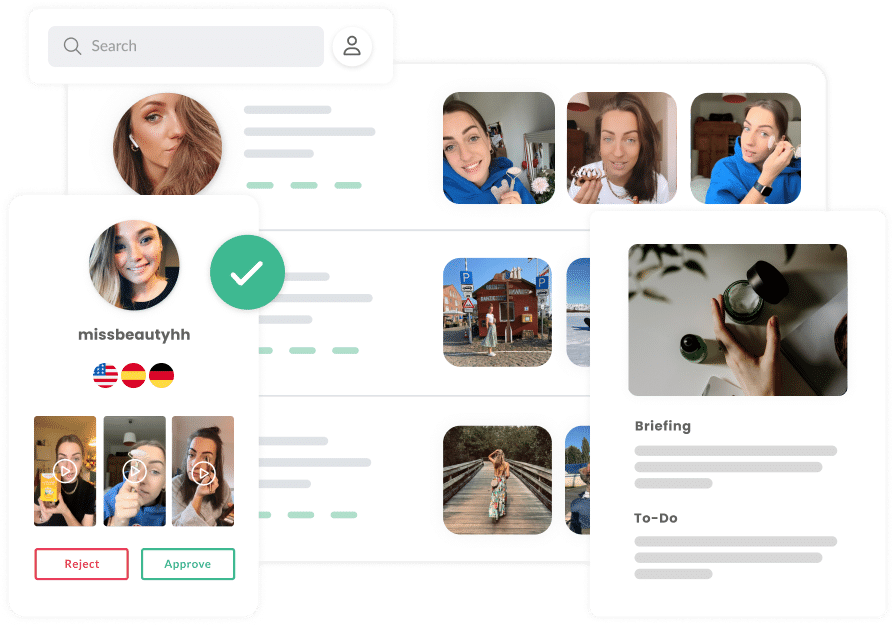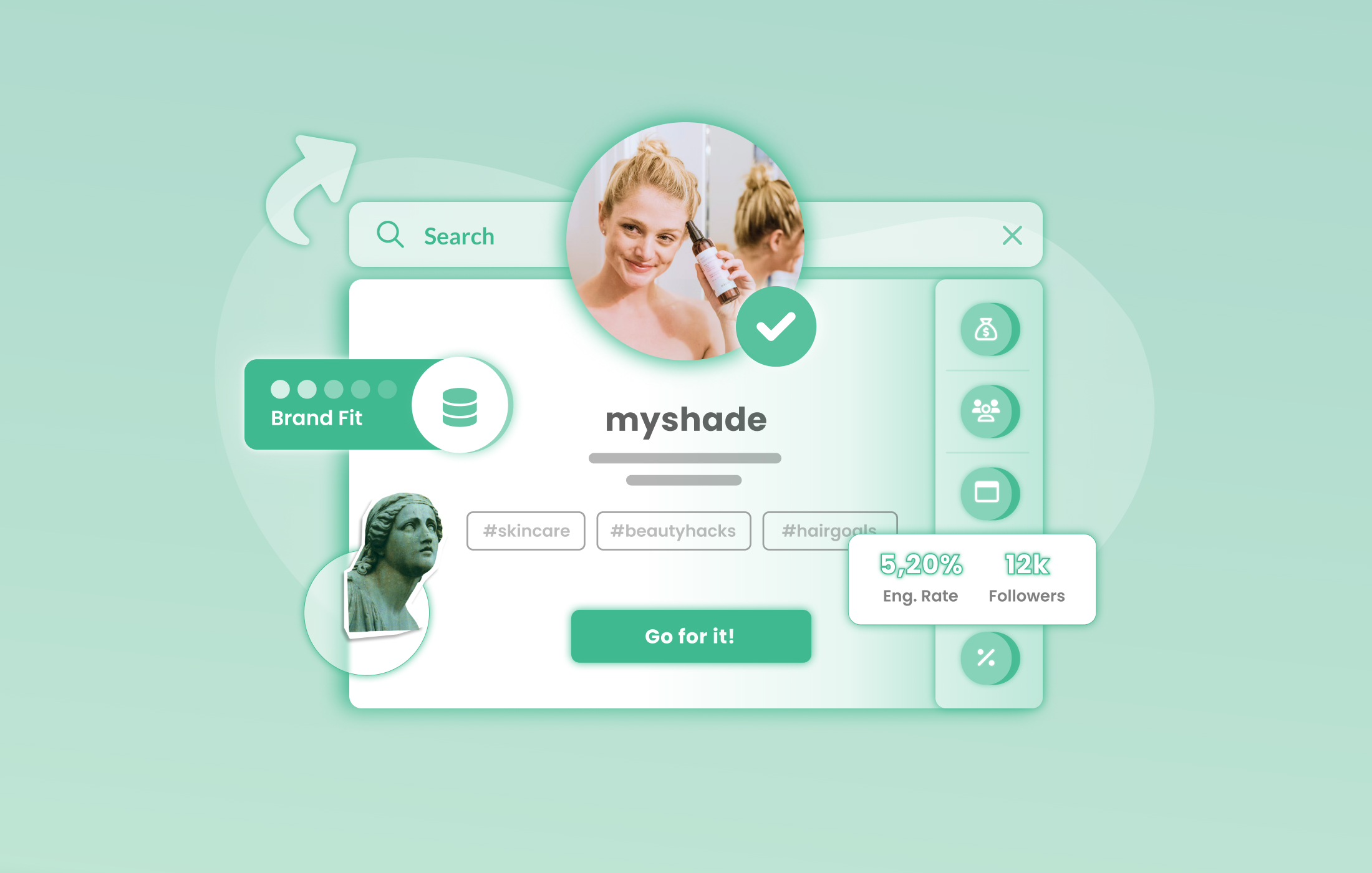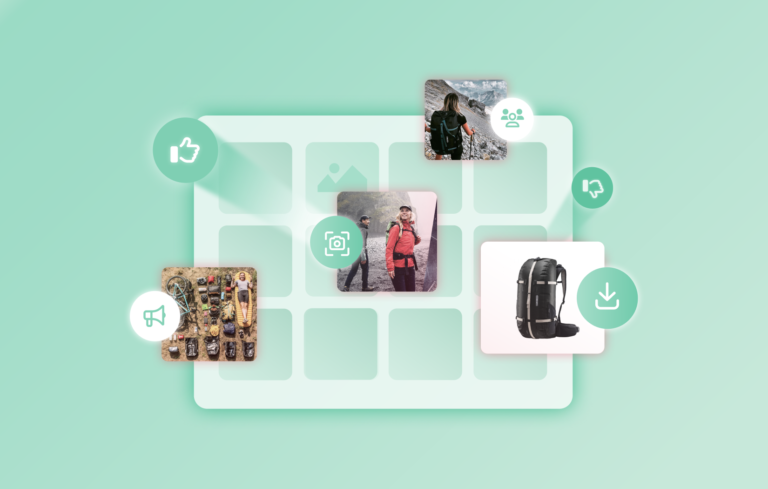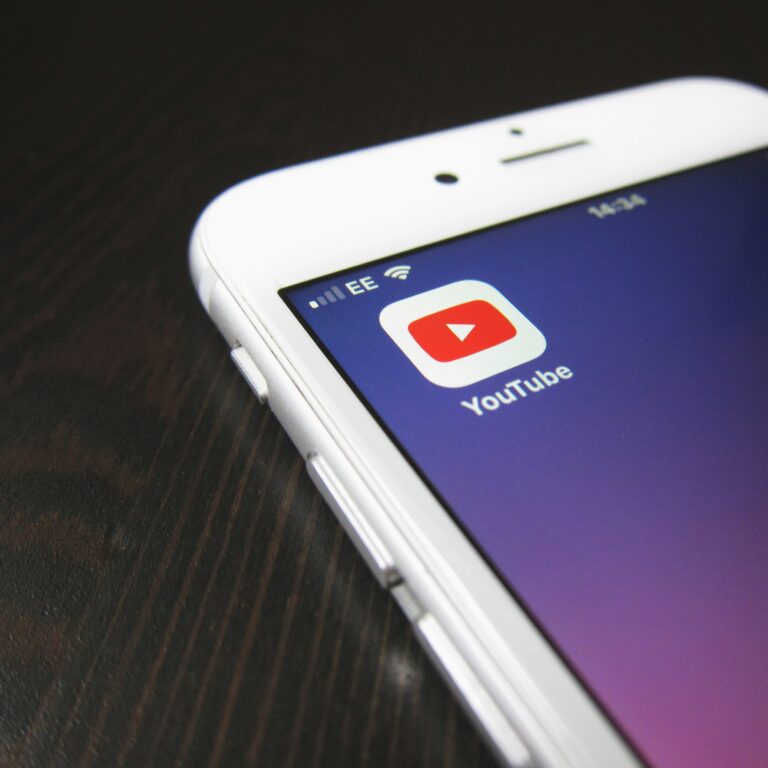Influencers have become an essential part of the marketing cosmos. As the Statista Advertising & Media Outlooks show, the annual market volume for Influencer Marketing in 2022 in Germany is estimated at around € 476, 50 million. As opinion leaders with a strong community, influencers, creators and bloggers promote brand awareness and help to market products effectively and authentically to a relevant target group.
With the mass of existing content creators, it is becoming increasingly difficult for companies to find the influencers best suited for their own brand. If the creator you choose and their visual content isn’t a good fit for your brand, it’s as effective as burning your money and in the worst case might even hurt your brand image. In this post, you’ll learn about 5 steps you should follow when selecting influencers. We’ll also provide you with 4 methods that will make finding influencers a breeze.
Definition Influencer
5 steps to find the right influencer
Now that you know how influencers are defined, let’s get specific about the 5 steps you should follow in your next campaign to find influencers.
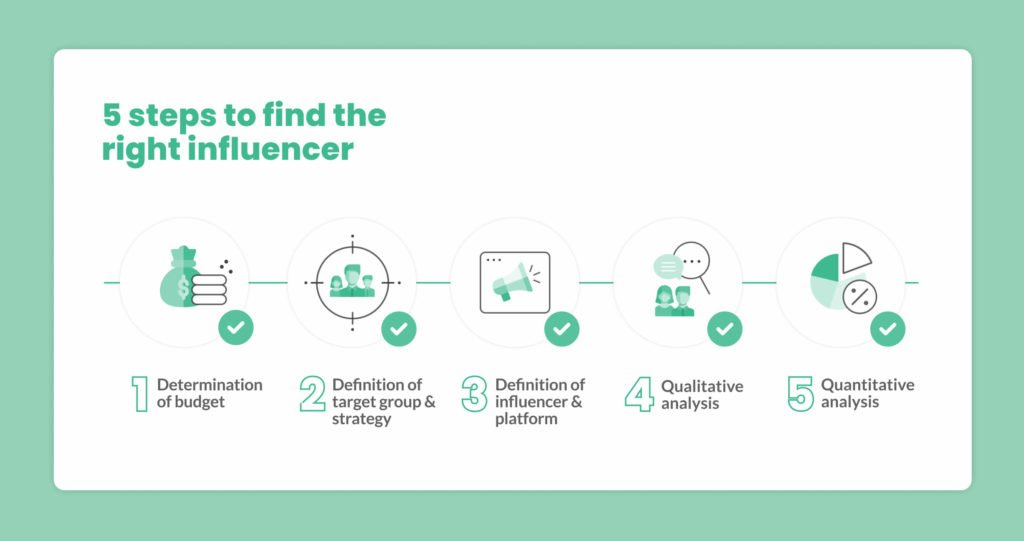
1. Determine the budget
No resources, no performance. Your budget will determine the entire planning and execution of your campaign, from marketing strategy to the selection of suitable influencers. The most sophisticated plan won’t do you any good if you don’t have the resources to execute it.
Therefore, at the beginning of each new campaign, compile all cost positions and find out which influencer type and which social media platform come into question and whether it makes sense to hire an external agency. You can find out how to calculate the individual expenses and which factors influence influencer marketing costs in our related blog post.
2. Define target group and marketing strategy
Just as important as determining the budget is defining your own target group and marketing strategy. Because only if you know what makes up your own community and what you aim to achieve with the marketing campaign, you can judge whether the influencer fits the company and the planned campaign.
Analyze your target group for personal data such as age, place of residence, interests and most frequently visited social media networks per month. Also, define the goal of your campaign. Is it to increase brand awareness or conversions? Should posts be reused later for other purposes, such as influencer whitelisting?
3. Define influencer type and platform
Depending on budget, marketing strategy and goal of the campaign, it is now time to find the right platform for your campaign and the right type of influencer.
First, decide whether to go for several smaller micro influencers or a few influencers with more followers. Micro influencers have the advantage of having a smaller but quite active community as well as usually having higher engagement rates compared to larger creators. With larger influencers, who come with a hundred thousand to over a million followers, you’ll reach more potential leads, but you’ll also have to deal with a higher scatter loss.
| Name of the influencer | Number of followers |
|---|---|
| Nano-influencer | 1.000 – 5.000 |
| Micro-influencer | 5.000 – 50.000 |
| Macro-influencer | 50.000 – 1.000.000 |
| Mega-influencer | < 1.000.000 |
If you want to learn more about the benefits of micro influencer marketing, read our blogpost on the topic.
Also, decide which platform you want the campaign to run on. It is also possible for marketing campaigns to run across multiple channels simultaneously, but it is often much more effective to focus on one platform and be more specific to the particular network structure.
In addition to goal and marketing strategy, your community is crucial for the choice of platform. In the previous analysis, you should find out on which platform your community spends the most time per month. Also pay attention to other content creators, for example bloggers with great expertise, who are popular with your target group.
4. Qualitative analysis
The qualitative analysis determines whether brand and creator are compatible with each other and whether the influencer can authentically convey the brand message. This makes qualitative analysis even more important than quantitative criteria. The following questions help to find the right influencers for your brand:
- Is the brand fit as ideal as possible? In other words, do brand and influencer match in terms of external presentation, values and the like? What is the style of speech and the general appearance?
- Does the influencer produce high-quality, appealing posts?
- Does the influencer focus on a specific set of topics in terms of content? Are they an expert in this field?
- Is the creator authentic and transparent?
- Is the creator’s own opinion on products represented or are cooperation partners consistently portrayed in a positive light?
- Are collaborations labeled in a legally compliant manner?
By the way: If you want to learn more about image rights on social media and copyright on Instagram, read our blogpost on the topic.
5. Quantitative analysis
The last step is quantitative analysis. Basically, this is nothing more than analyzing key performance indicators (KPIs) that are important for your campaign. Which metrics or performance indicators you determine depends on the objective and strategy of your campaign. Possible KPIs are, for example:
- Followers
- Page views
- Engagement rate
- Click-through rate (CTR)
- Growth of the channel
If you want to learn more about KPIs and how to calculate the success of your marketing campaign, check out our blog post on influencer marketing ROI.
4 ways to find influencers
Through the top 5 steps, you now know how to structure your marketing campaign and what to look for when searching for influencers. But how can you successfully find the right influencers? The following 4 methods will help you with your search:
Manual search
In manual search, you check your own followers on social media for suitable influencers. The advantage here is that they already know your brand and possibly your products. Ideally, they already identify with your brand, have already made a purchase or even posted Social Content related to your brand. These are ideal conditions to win them over as brand ambassadors for a collaboration.
Alternatively, it is also possible to search your own branded hashtags and @-mentions on Instagram for interesting brand ambassadors. People who show a relationship with your brand through hashtags and mentions are usually aware of what your brand stands for because they have already made a conscious decision to buy from your brand. Just like browsing your followers, identification with your brand and products is already a given at best.
Influencer databases
There are databases for almost everything, including influencers. Another way to find suitable influencers are so-called influencer databases. With these, you can filter countless Instagram accounts. The database sorts them according to certain categories such as number of followers, respective content focus or even according to a KPI such as engagement rate. You can be very specific about what you’re looking for and you’ll be shown a pool of matching influencers from which you can further select.
Some influencer databases are for example: TopBlogs.de, Bloggerei.de, buzzsumo.com, getcarro.com, heepsy.com, influencity.com, captiv8.io, thisishey.com.
Search engines
Use search engines like Google or Ecosia to find potential influencers. Enter your desired topic in the search bar, for example “vegan diet Instagram” and get a hit list that can be used as a shortlist for your further research.
Influencer Tools
Furthermore, there are Instagram marketing tools from companies and agencies that give you an overview of influencer content on social media. They analyze and search for suitable influencers for you and your specific campaign. With influencer sed cards and specific filter functions, you get exactly the information you need for your search. This makes your influencer relationship management much more effective and saves you a lot of work if you conduct influencer marketing in-house.
Use the tool to filter stories and posts by hashtags, @-mentions, or keywords and find influencers who match the keywords you want to be associated with your brand. You’ll also get valuable stats on relevant metrics that make searching scalable (follower demographics, reach, engagement rate, among others). Through insights into past collaborations, such as product seeding campaigns, you can analyze how authentic the influencer is. Does the content this person has already posted match the spirit of your brand?
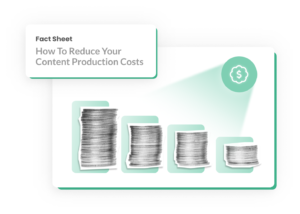
Download our fact sheet now and learn how to optimize content production for your brand and reduce costs in no time.
Conclusion
Because creators in the marketing sector have become an essential part of visual content production these days, the ability to find suitable influencers is becoming increasingly important. The precondition for an ideal fit between brand and creator is a clearly defined marketing strategy and specific goals. Special databases and influencer tools help while searching for potential influencers.
If requirements and wishes are clearly communicated during collaboration and both sides constantly communicate with each other, companies can benefit from the influencer’s social proof and reach. This makes it possible to get the most out of influencer campaigns, increase brand loyalty of one’s own followers and build long-term partnerships with creators.
Sources
https://de.statista.com/statistik/daten/studie/941248/umfrage/vorteile-von-influencer-marketing-im-vergleich-zum-klassischen-online-marketing-in-deutschland/
https://de.statista.com/outlook/amo/werbung/influencer-werbung/deutschland?
https://wirtschaftslexikon.gabler.de/definition/influencer-100360
Neuberger, C. Interaktivität, Interaktion, Internet. Pub 52, 33–50 (2007): https://doi.org/10.1007/s11616-007-0004-3
Horton, D. & Wohl, R. (1956): Mass communication and para-social interaction: Observations on intimacy at a distance. In: Psychiatry, 19(3), S. 215-229.

